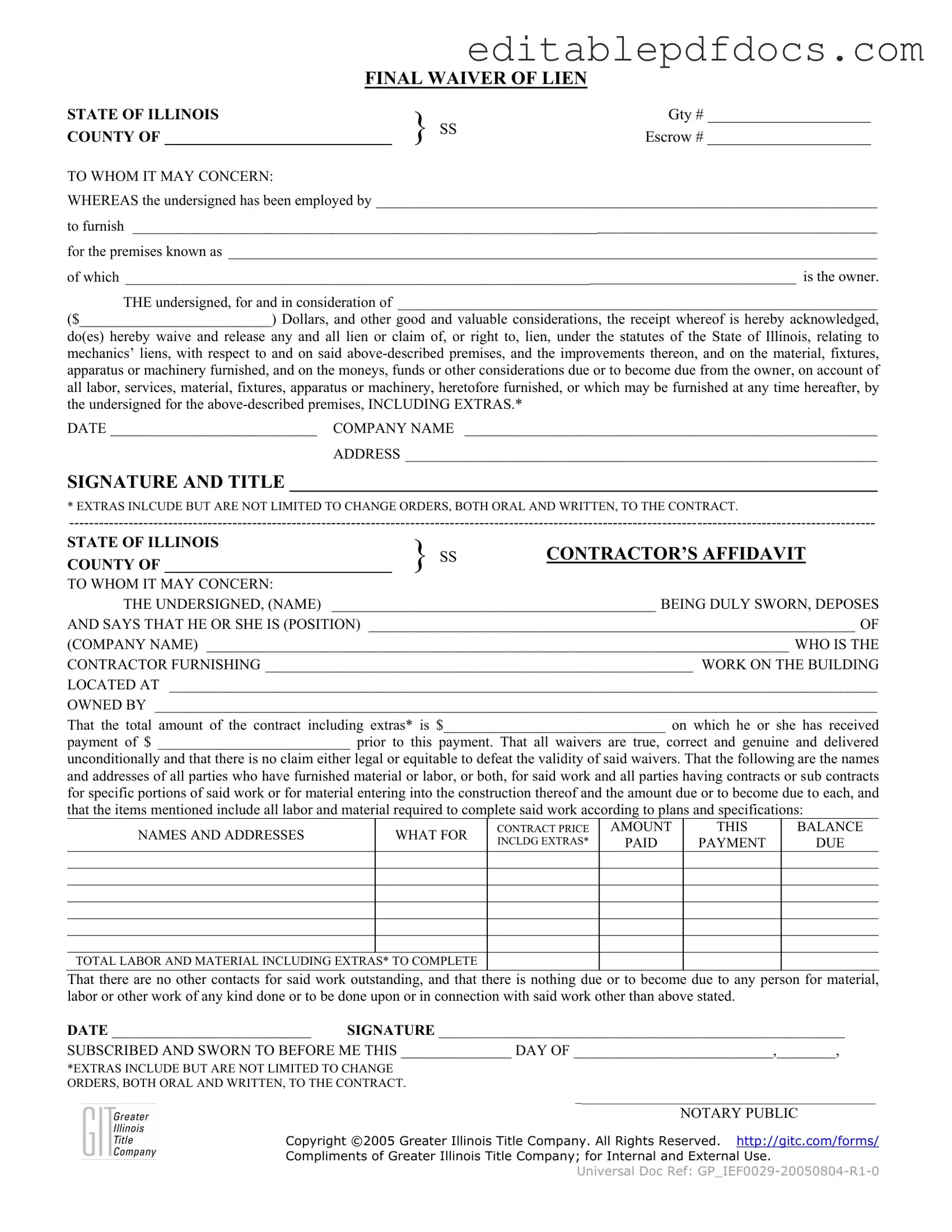Filling out the Illinois Final Waiver of Lien form can be straightforward, but many people make common mistakes that can lead to complications. One frequent error is failing to complete all required fields. Every blank space is important. Omitting information, such as the property address or the amount paid, can invalidate the waiver.
Another mistake is not providing accurate payment amounts. Ensure that the total contract amount and the amount received are correct. Discrepancies can raise red flags and may lead to disputes. Double-check your figures before submitting the form.
People often overlook the need for signatures. The waiver must be signed by the appropriate individual, typically the contractor or a designated representative. Without a signature, the document lacks authenticity and cannot be enforced.
Not including the date is another common oversight. The date is essential for establishing when the waiver was executed. An undated form may create confusion regarding the timeline of payments and services rendered.
Another issue arises from misunderstanding the term "extras." Many individuals fail to list change orders or additional work that was agreed upon. This omission can lead to misunderstandings about what has been paid and what remains due.
Some people mistakenly believe that once they submit the waiver, they no longer have any obligations. This is not true. The waiver only applies to the specific work and payment mentioned. It does not absolve you from future responsibilities or payments related to other projects.
Additionally, individuals often neglect to include all parties involved in the project. The form requires a list of all subcontractors and suppliers. Failing to include these parties can lead to claims against the property owner and create legal complications.
Another frequent mistake is not properly notarizing the document. The Illinois Final Waiver of Lien requires notarization to be valid. Ensure that a notary public witnesses the signature and affixes their seal to the document.
Lastly, people sometimes submit the waiver without keeping a copy for their records. It's crucial to retain a copy of the completed waiver for future reference. This will help you prove that you fulfilled your obligations if any disputes arise later.
